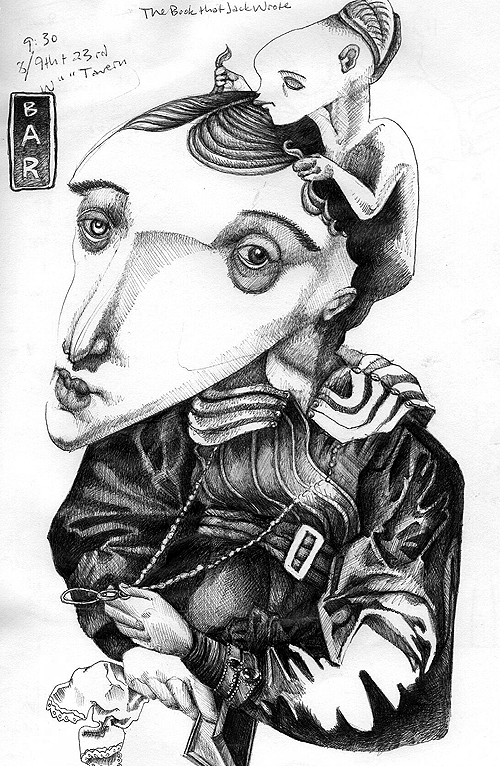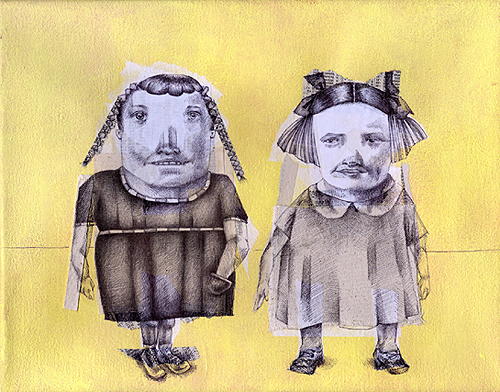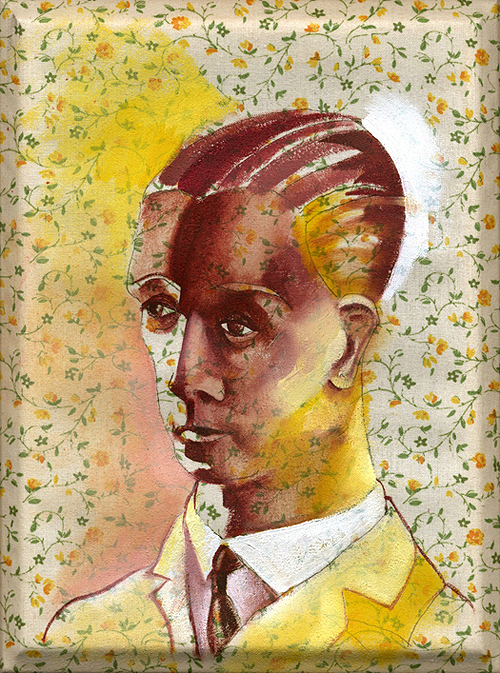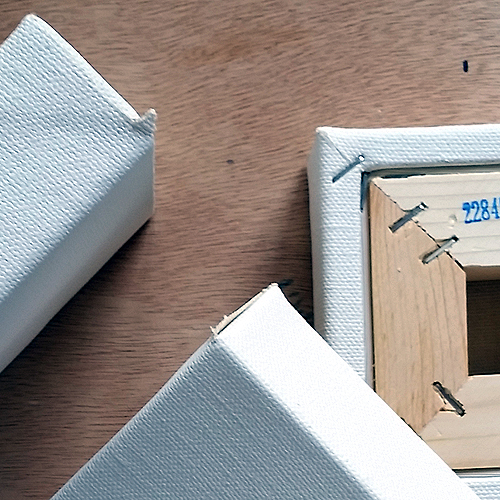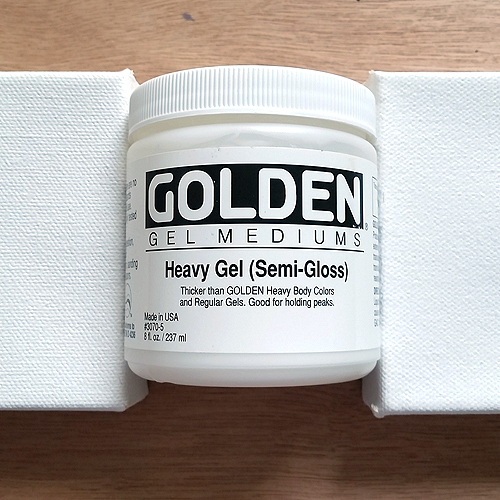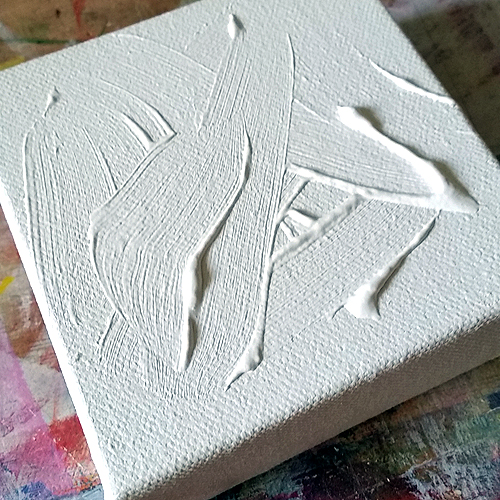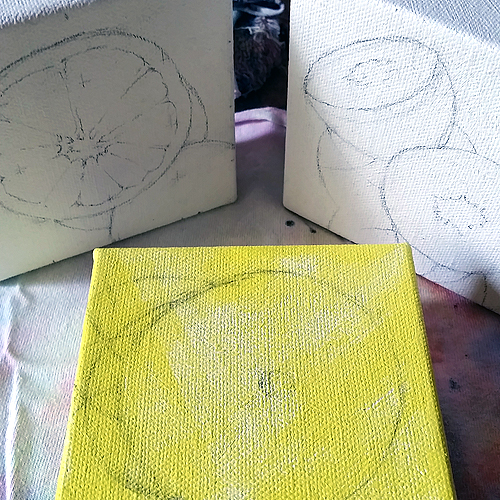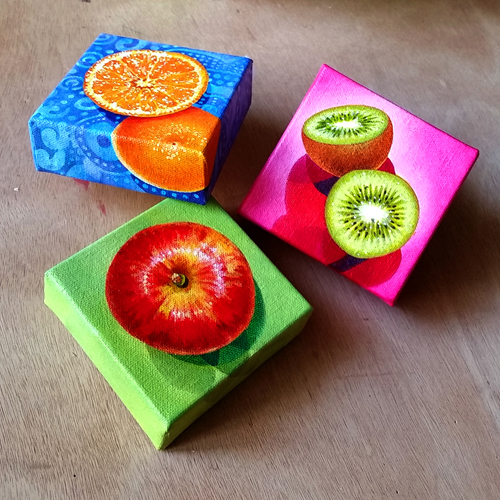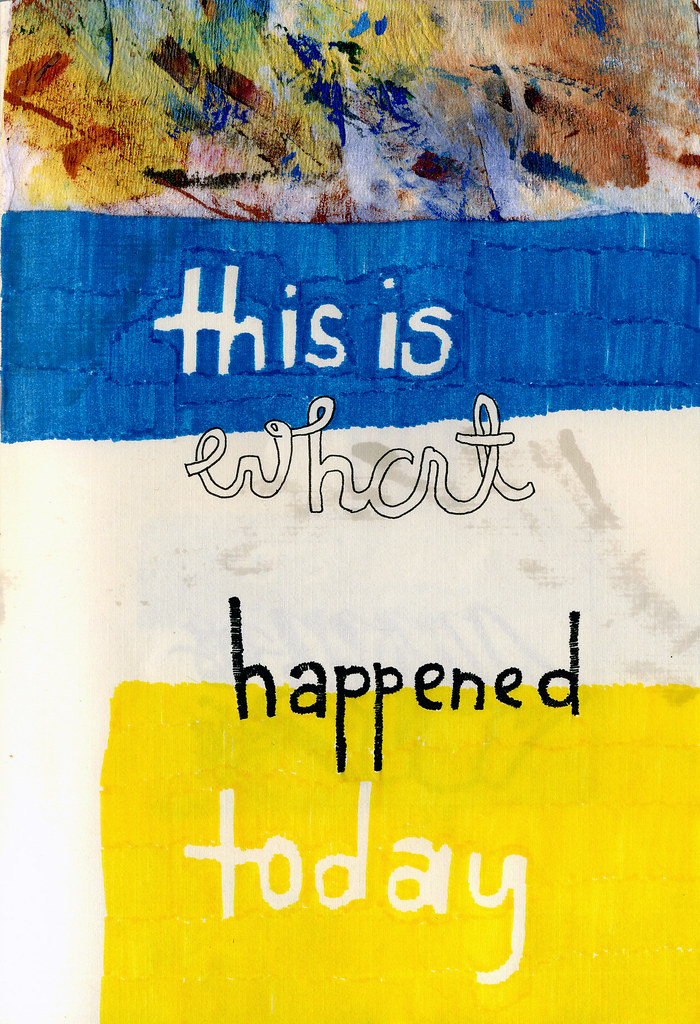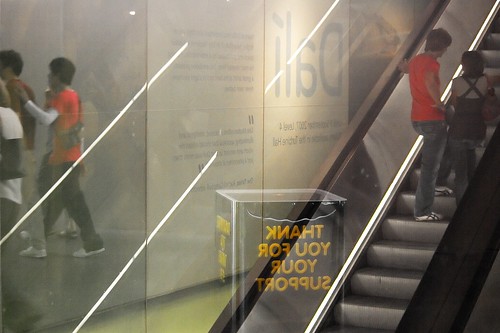Julia Kirt, the director of the Oklahoma Visual Arts Coalition, published a post today about labelling your work when you deliver it to a gallery. Snip:
I recently organized an exhibition with 18 artists in it. Several pieces had no name on the back, much less a title or contact information. Of those pieces, a few were delivered when I was not in the office, so could easily have not known which was which.
I had a similar experience in 2003 when I was an intern at the Center for Contemporary Arts in Santa Fe. We were mounting a fundraising show called Inside [8*3], an open call for works less than 8 inches on a side. We had hundreds. Can you guess how many of those pieces were called Untitled? Answer: waaay too many. We even had a few mixups in which buyers got incorrect pieces delivered to them because the works of art were indistinguishable on paper. This brings me to the crux of today's post.
Title Your Work
Please, do this. "Untitled" is a cop-out, unless you have created a work that is intentionally formal (that is, concerned mainly with forms), and/or you wish for the piece to reflect as little context as possible. For my part, I'm incapable of making paintings that don't reference visual culture in a thousand little ways, so I might as well create titles that provide additional content.
(I began actively titling my work under the instruction of Martin Facey at the University of New Mexico. It was one of the lessons that stuck.)
Another reason not to rest on "Untitled" is that it makes your work harder to distinguish and identify. As Julia mentioned above, it can be headache-inducing for gallery workers as well (and you want those people on your good side). Imagine you've just delivered 20 paintings to a gallery for a solo show. They have twenty different prices, but they're all called "Untitled: oil on canvas." It would be difficult enough for the gallery staff to properly identify your work, not to mention audiences at large.
Note: A good solution to this is to provide your gallery with a detailed inventory including thumbnails. I'll be talking about this in more detail at an upcoming OVAC workshop; see note below.
How To Title Your Work
Language is a frequent trigger of my creative process. In my character-based work, I may start with a name and put a face to it, or vice versa. I keep a file containing my favorite idioms, and another for the almost-correct-but-mistranslated-sounding advertisements that appear in my email spam. Maybe I'll latch onto a song lyric or movie line. Sometimes I'll be working on a painting, and an appropriate phrase will float to the surface of my consciousness. All these can become titles.
If coming up with titles is difficult for you, here are some suggestions for semi-random word generators.
Reader's Digest or any newspaper or magazine. Pick a column. Read the last word of each line in that column. Choose a sequence of 3-5 words that sound interesting. ex. "Teaches how they sip." "Working love had most empathic."
Babelfish. The AltaVista Babelfish translator is a great source of slightly innacurate language. Begin with a common phrase, such as "All roads lead to Rome." Send it through the translator multiple times through multiple languages. I had it translated to Russian, back to English, to Japanese, to English again, to French, then Greek, back to English. "Action of all streets to Rome" is what came out.
Channel surfing. Flip through channels on the boob tube. Write down the first word that you hear each time you turn to a new channel. Repeat as needed.
Diceware and the Beale List. Roll 5d6 (or one six-sided die five times) and write down the six numbers that come up. Repeat two more times, or more if you like. You will have three five-digit numbers. Each of these numbers corresponds to a word on the Beale list. (This is an excellent method for generating memorable but hard-to-break passwords.) ex. "Noun walls fauna." "Feels bozo spire."
Place names. This is how I created the characters of Normal, OK. Use an atlas or actual road signs. ex. Pernell Foster, Guthrie Perkins Cushing, Stillwater Hennessey.
Your birthdate and a book. Say your birthday is April 4 1967. (Mine isn't.) Grab any book off any shelf. Turn to page 4, look at the fourth line, and note the first, ninth, sixth and seventh words. ex. "Writing as is uncertain." "Worthy now as I." Modify this as you see fit, by matching the digits of your birthdate to chapters, pages, lines, or words.
Speaking of books. Look at your bookshelf. Read one word from each consecutive book title, three to five in a row. ex. "Dawn to Modern Ambassador." "Name Visual Working Basics." "Geek Garlic Housekeeping." "Sylvia Companion of Insects."
Phone book acronyms. Open the phone book and choose the first name you see (first or last). Write words that begin with each letter of that name. ex. "Paul" becomes "Please Accept Understanding Limes."
Wikiquote. Use a quote as is, or for extra fun, switch the words around.
The Internet Anagram Server. Begin with a name or phrase, then send it through the anagram generator. For a more concise result, I set the maximum number of words to no more than three, and the minimum number of letters to three or four. Here is such a result for "All roads lead to Rome." That's right, 654 anagrams. That's why I leave this up to a computer. Amoral aloe toddlers, anyone?
New proverbs.
Go ye and title.
UPDATE. You can find some more colorful phrases at this page detailing the animal naming scheme for various versions of Ubuntu (a popular distribution of the Linux operating system).
Related: I'm going to be giving a talk about organizing one's art inventory on November 22. It's part of OVAC's workshop series called A.S.K. (Artist's Survival Kit). The Business of Art 101 will be at the Edmond Public Library. Visit OVAC's site to register.
I recently attended an OVAC workshop on building your portfolio, and it was a great experience. I came away feeling energized, motivated, and well-informed. Most of these workshops are only $15 for non-OVAC members! You can't not go.
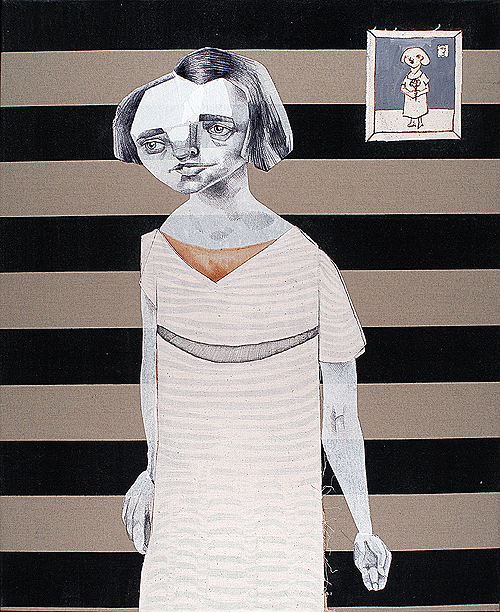 Stripey Lady. Mixed media on found fabric, 2005 by Sarah Atlee.
Stripey Lady. Mixed media on found fabric, 2005 by Sarah Atlee.